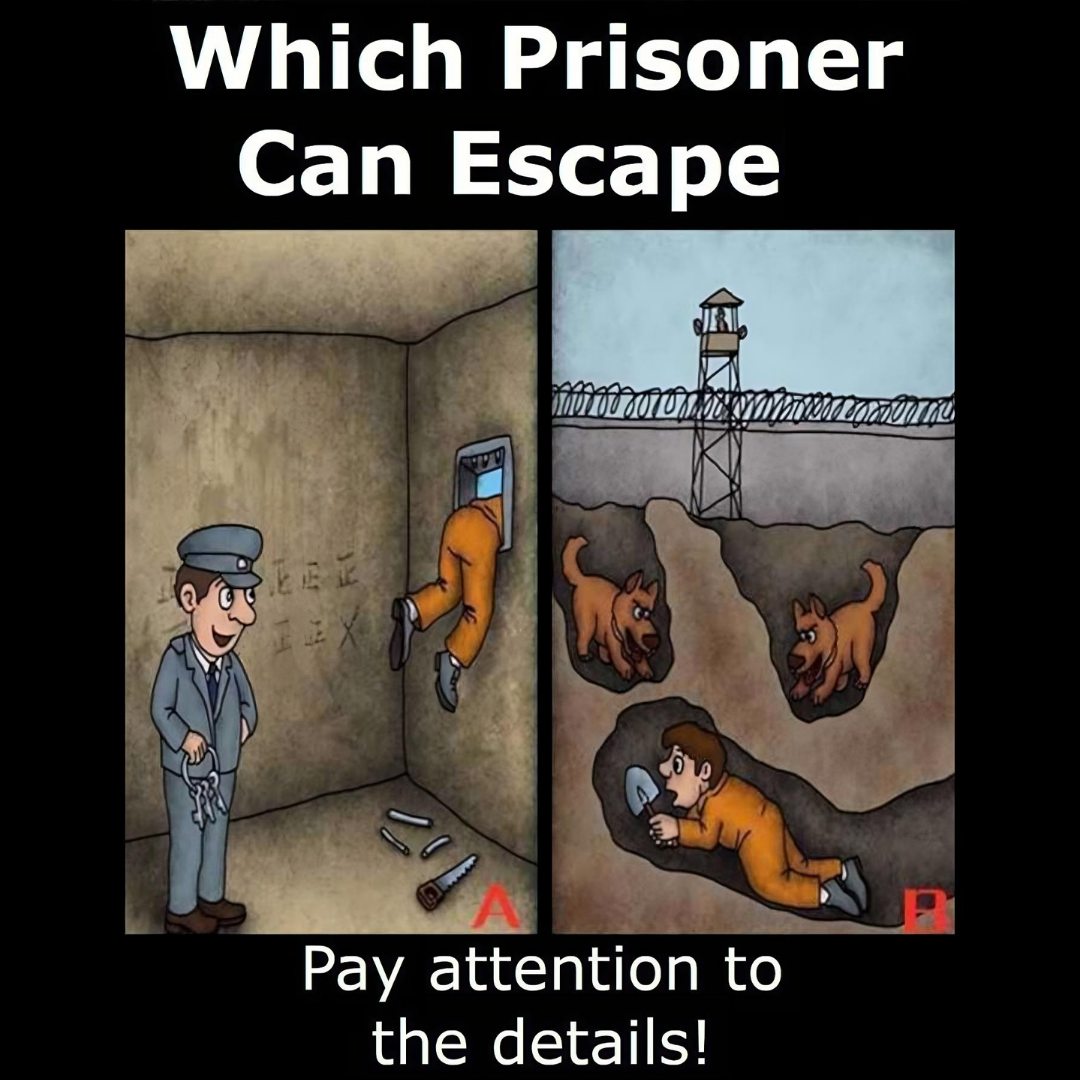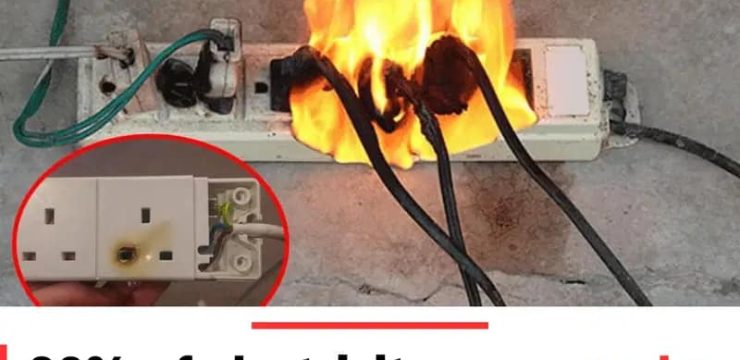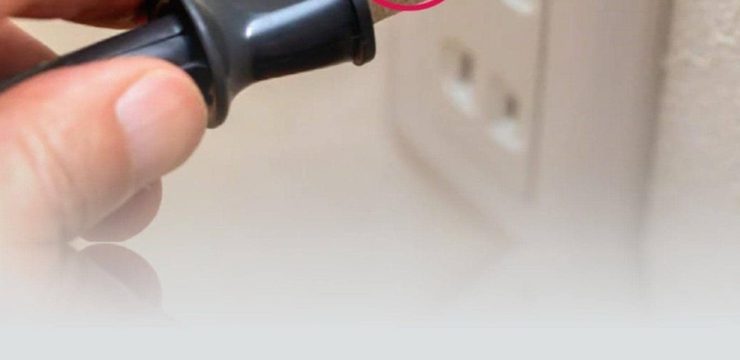Puzzles and riddles are not only entertaining but also a great way to stretch our brains, hone our observational skills, and strengthen logical thinking. Today’s puzzle poses an intriguing question: which prisoner has the best chance of escaping? At first glance, it may seem straightforward, but this riddle challenges us to dig deeper, look beyond the obvious, and pick up on subtle clues that could reveal the answer. Ready to jump in? Let’s analyze the scenario and see if we can figure it out together!

Common Mistakes People Make When Tackling This Puzzle
With puzzles like this, it’s easy to get sidetracked by focusing on the most obvious details while overlooking smaller, critical clues. Many people might quickly assume that both prisoners have equal chances of escaping or think that the prisoner with the tunnel is on his way to freedom. Others may assume that the prisoner near the window has a clear path. But here’s the twist: this puzzle requires a closer look, as the real answer lies in a detail that might not be obvious at first glance.
Step-By-Step Solution Guide
To solve this riddle, we need to break down each prisoner’s situation to understand who truly has the best chance of escaping. By examining the setup, we’ll uncover why one prisoner has a much better opportunity than the other.
Prisoner A’s Situation: A Clever Distraction
In the image, we see Prisoner A standing near a small window with a guard stationed nearby, watching his every move. At first glance, it might appear that Prisoner A is trying to climb through the window. However, there’s more to this scene than initially meets the eye.
A closer look reveals that Prisoner A is holding a set of keys in his hand—a small yet critical detail that changes everything. This clue suggests that Prisoner A has managed to trick the guard and secure the keys without raising any suspicion. Perhaps he convinced the guard to check the window, creating a distraction that allowed him to snatch the keys. With the keys now in his possession, Prisoner A can unlock his cell door, creating a clear, safe path to freedom. Meanwhile, the guard remains unaware of the missing keys, giving Prisoner A a major advantage in his escape.
Prisoner B’s Situation: A Risky Route
In the same scene, we see Prisoner B hard at work, digging a tunnel as his escape route. At first glance, this approach might seem promising, as he appears to be making steady progress toward creating a way out. However, there’s a significant problem: guard dogs are stationed outside the tunnel exit. These dogs are specifically trained to detect and stop escape attempts, making it highly unlikely that Prisoner B will succeed without getting caught.
Even if Prisoner B completes the tunnel, he faces a major obstacle in the form of the guard dogs. Their presence suggests that the guards are prepared for potential escape attempts via tunnels, creating a defense that is hard to overcome. While Prisoner B’s efforts are commendable, his escape plan is flawed due to the dogs waiting outside, which ultimately makes his path to freedom nearly impossible.
Why Prisoner A Has the Best Chance of Escape
After analyzing both situations, it’s clear that Prisoner A has the upper hand. By obtaining the keys, he gains access to his cell door, allowing him to walk out without facing any immediate threats. In contrast, Prisoner B faces the daunting challenge of guard dogs blocking his escape route, making his plan risky and unlikely to succeed. Prisoner A’s clever move with the keys has given him a much safer and more straightforward path to freedom.
Final Answer and Explanation
So, who has the best chance of escape? The answer is Prisoner A. His quick thinking and smart move to acquire the keys allow him to leave his cell without encountering significant obstacles. Prisoner B’s plan, though resourceful, is undermined by the presence of guard dogs at the tunnel’s exit, making his escape attempt nearly impossible.
The Power of Observation: How Details Make All the Difference
This puzzle reminds us that answers often lie in the small details. In both puzzles and real life, critical clues can sometimes be the easiest to overlook. Developing our ability to observe these subtle hints can lead us to solutions that might otherwise remain hidden. This riddle emphasizes the importance of paying close attention and using logical reasoning to uncover the best solution, even when it might seem misleading at first glance.
Conclusion
In today’s puzzle, we’ve concluded that Prisoner A has the best chance of escaping, thanks to his clever maneuver with the keys. His approach is subtle but effective, allowing him to avoid the dangerous path that Prisoner B faces with the guard dogs. This riddle is a perfect example of how observation and critical thinking can reveal the best answer, especially in puzzles designed to mislead us with seemingly obvious solutions.
Share Your Thoughts!
Did you figure out the riddle on your first try? Did you catch the key detail, or were you distracted by the tunnel? Share your thoughts and experiences in the comments! Puzzles like these are a fantastic reminder that sometimes, the answer lies in the details we almost miss.
Try More Puzzles to Sharpen Your Logic Skills!
If this puzzle piqued your interest, why not dive into more riddles? Puzzles are a fun way to enhance your logic, creativity, and observational skills. Keep solving, keep observing, and enjoy the thrill of uncovering hidden answers!





